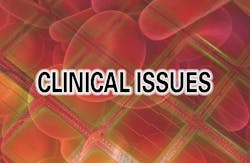The ever-decreasing cost of next generation sequencing (NGS) has allowed genetic testing to make the leap from research into routine screening applications. In the clinical setting, NGS is now commonly used for prenatal testing, HLA typing, and cancer diagnostics. Regardless of the application, current techniques are based on targeted sequencing, using DNA capture methods to look at specific genetic markers. The problem with this approach, particularly in cancer or rare disease diagnostics, is that the limited information provided can lead to erroneous or inconclusive results. Whole genome sequencing (WGS) eliminates this issue by providing comprehensive sequence coverage, then using bioinformatics approaches to identify relevant genetic markers.
NGS has revolutionized the use of genetic testing across a broad range of disciplines. Constantly decreasing costs and improved accessibility have led to rapid growth in sequencing-based applications—from medical research to agriculture—driving the development of powerful technology platforms that offer even faster and cheaper sequencing. But sequencing is only one piece of the puzzle, and both up- and downstream processing steps are just as important to the overall reliability and cost effectiveness of NGS. In particular, the efficiency and reproducibility of pre-analytical DNA isolation and library preparation have a significant impact on the overall cost and practicality of the technique.
A targeted approach
Consistent and reliable results are crucial for any technique intended for clinical use or routine screening applications, making fast, efficient, and reproducible DNA library preparation essential.
Classical NGS applications are based on target enrichment using one of two strategies:
(1) Targeted PCR amplification followed by library preparation and sequencing of the PCR products, or
(2) generation of a whole genome library followed by targeted capture of the sequences of interest.
Both approaches require a number of sequential incubation and wash steps, and careful processing is required to avoid the sequencing results being skewed by experimental bias. To mitigate this issue, standardized library preparation kits are now available for many targets of interest to clinical research, covering areas such as cancer, infectious diseases, liquid biopsies, microbiome analysis, and epigenetics. However, these kits do not address the main drawback of targeted sequencing; that capture/hybridization and enrichment steps are extremely time consuming, often requiring lengthy incubation times. This leads to turnaround times (TATs) of several days from sample to results, limiting the potential usefulness of next generation sequencing.
Comprehensive coverage
Current targeted sequencing strategies were developed as a result of the high cost of sequencing in the early days of NGS. However, as sequencing platforms have become faster, more powerful, higher capacity, and more efficient, the cost of NGS has plummeted; it is already well under $1,000 to sequence an individual human genome and is likely to reach the $100 milestone within a decade. This dramatic decrease in sequencing costs has been accompanied by similar reductions in the cost of data storage and analysis, making WGS a viable option for disease diagnostics. As the name suggests, WGS involves library generation and sequencing of all the DNA within a sample, then uses data mining and other advanced bioinformatics approaches to identify relevant genetic markers.
A major advantage of this approach is that it avoids capture/hybridization and enrichment steps associated with targeted techniques. This allows much faster library generation and eliminates the requirement for space for additional incubators within the laboratory. WGS approaches also have the potential to significantly improve diagnostics for cancers and rare diseases by removing the need to choose (potentially incorrect) genetic biomarkers for analysis. And even if initial diagnostic analyses prove inconclusive, the full genomic data is available for re-analysis, avoiding further processing of blood or biopsy samples. As with targeted sequencing methods, a number of WGS sample preparation kits are now available to ensure consistent and unbiased library generation.
Embracing automation
Laboratory automation plays a central role in any clinical laboratory and is essential for broad uptake of genetic testing in a clinical environment. Many of the targeted sequencing kits available for both research and diagnostics have already been automated using liquid handling platforms, due to the labor-intensive nature of target enrichment techniques, which require numerous reagent addition, incubation, and wash steps.
Some suppliers have taken this approach a step further, offering complete workflow solutions combining all the necessary hardware, software, and reagents to generate sequencing-ready libraries. This type of end-to-end solution is vital for genetic testing to become more widespread in a clinical setting, providing optimized, reliable, and easy-to-use systems suited to a multi-disciplinary laboratory.
Reducing manual activities, and the associated risk of processing errors and cross-contamination, obviously helps to improve throughput and the consistency of results, as well as traceability, but cannot compensate for the long incubation times required for sample capture/hybridization and enrichment. Fortunately, many of these automation platforms can be easily adapted to perform untargeted library preparation for large amounts of genetic material, providing an elegant solution for WGS.
The cost of QC
Another aspect of sample preparation for NGS which can significantly impact the total cost of sequencing, is library quantification and quality control (QC) testing. Historically, this has been performed by qPCR analysis or using an automated capillary electrophoresis platform. This essential step generally requires manual set-up and, in the case of qPCR, takes several hours to perform—further impacting TATs. While electrophoresis is faster, the majority of instruments available have limited throughput, and still require significant user input. And both methods require costly reagents, driving up overall sequencing costs.
Fluorescence-based QC testing
A recently developed alternative to this approach is fluorescence-based QC testing, which is achieved by incorporating a specific number of fluorescent labels into the library molecules during preparation. This method eliminates sample loss for QC, is independent of fragment size, and can be easily automated by integrating a fluorometer or microplate reader into the library preparation workstation. This method also has the advantage of being much faster than qPCR- or electrophoresis-based analysis, taking around six minutes for QC testing of an entire 96-well plate. This has the knock-on benefit of reducing the overall library preparation workflow—to go from DNA to pooled libraries, ready to be loaded into the sequencer—from around six to eight hours to less than four hours. In a clinical setting, this technology could have a significant impact on TATs for time-critical patient results, potentially doubling throughput by allowing two library preparation runs per day.
Summary
WGS is growing in popularity as the cost of NGS falls. Automation of library preparation is essential for reproducible and reliable processing as this technique moves toward clinical applications, helping to standardize results and accelerate TATs. A more integrated approach—combining hardware, software, and reagents from a single supplier—will help to improve access to this technology and aid the translation from clinical research into routine diagnostics.
About the Author

Willem K.C. van Loon
serves as Director of Genomics at Tecan, Switzerland, and works with his team to automate a wide range of genomics applications. He holds degrees in Chemistry and Laboratory Automation from The Hague University of Applied Sciences, and has extensive experience in the automation of life sciences laboratory workflows, collaborating with major liquid handling providers, reagent suppliers, and customers around the globe.
